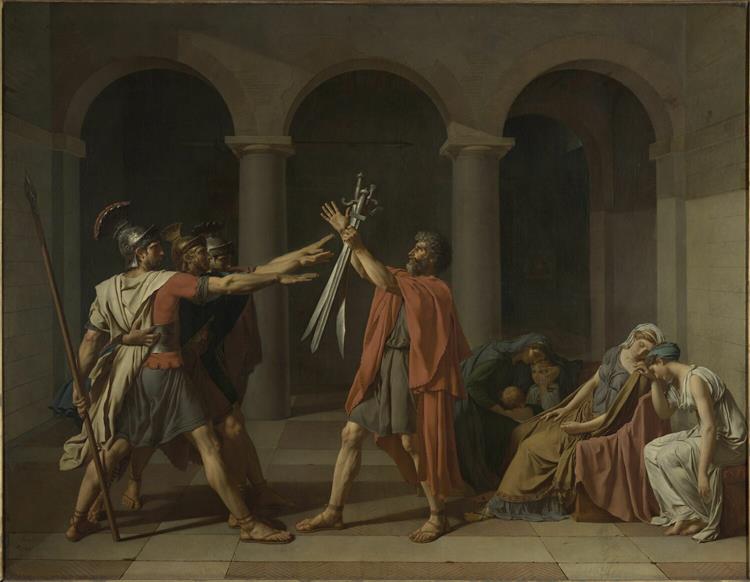
Neoclassicism
Style
Neoclassical art arose in opposition to the overly decorative and gaudy styles of Rococo and Baroque that were infusing society with a vanity art culture based on personal conceits and whimsy. It brought about a general revival in classical thought that mirrored what was going on in political and social arenas of the time, leading to the French Revolution.
The primary Neoclassicist belief was that art should express the ideal virtues in life and could improve the viewer by imparting a moralizing message. It had the power to civilize, reform, and transform society, as society itself was being transformed by new approaches to government and the rising forces of the Industrial Revolution, driven by scientific discovery and invention. Neoclassical aesthetic attitude invokes harmony, clarity, restraint, universality, and idealism.
Neoclassical works (paintings and sculptures) were serious, unemotional, and sternly heroic. Neoclassical painters depicted subjects from Classical literature and history, as used in earlier Greek art and Republican Roman art, using somber colors with occasional brilliant highlights, to convey moral narratives of self-denial and self-sacrifice fully in keeping with the supposed ethical superiority of Antiquity. They emphasized on austere linear design, using archaeologically correct settings and clothing. Neoclassical sculpture dealt with the same subjects and was more restrained than theatrical Baroque sculpture, less whimsical than the indulgent Rococo.
Neoclassicism as manifested in painting was initially not stylistically distinct from the French Rococo and other styles that had preceded it. This was partly because, whereas it was possible for architecture and sculpture to be modeled on prototypes in these media that had actually survived from Classical antiquity, those few Classical paintings that had survived were minor or merely ornamental works—until, that is, the discoveries made at Herculaneum and Pompeii. The earliest Neoclassical painters were Joseph-Marie Vien, Anton Raphael Mengs, Pompeo Batoni, Angelica Kauffman, and Gavin Hamilton. Those artists were active during the 1750s, ’60s, and ’70s. Each of those painters, though they may have used poses and figural arrangements from ancient sculptures and vase paintings, was strongly influenced by preceding stylistic trends. An important early Neoclassical work such as Mengs’s Parnassus (1760) owes much of its inspiration to 17th-century Classicism and to Raphael for both the poses of its figures and its general composition. Many of the early paintings of the Neoclassical artist Benjamin West derive their compositions from works by Nicolas Poussin, and Kauffmann’s sentimental subjects dressed in antique garb are basically Rococo in their softened, decorative prettiness. Mengs’s close association with Winckelmann led to his being influenced by the ideal beauty that the latter so ardently expounded, but the church and palace ceilings decorated by Mengs owe more to existing Italian Baroque traditions than to anything Greek or Roman.
See also Neoclassicism (art movement)
Sources:
www.visual-arts-cork.com
www.britannica.com
www.theartstory.org